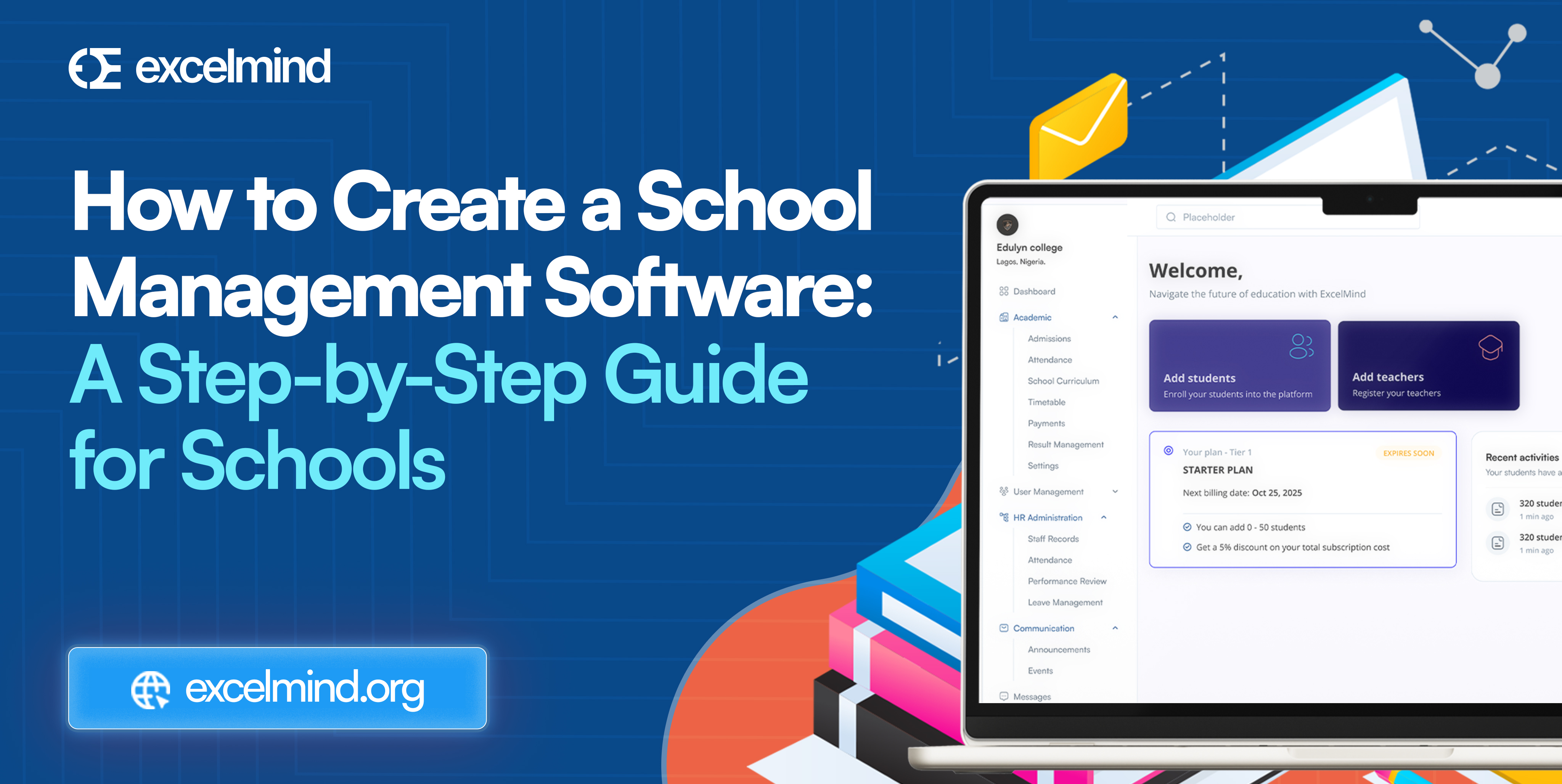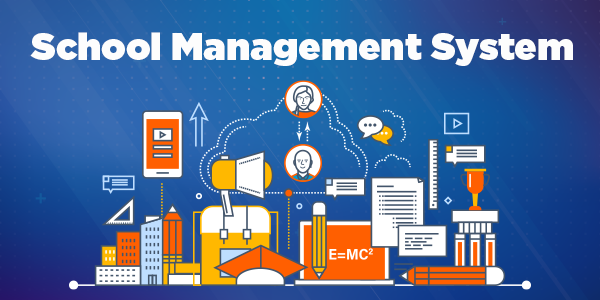Physical Address
304 North Cardinal St.
Dorchester Center, MA 02124

In educational systems now, schools need smart tools to manage their work better. A school management software can save time, improve communication, and make learning easier for everyone: school owners, teachers, students, and parents.
Imagine a platform like ExcelMind, a new school management software being built to transform how schools in Africa and beyond operate. It offers tools for everything from fee payments to virtual classrooms, making school life smoother.

If you want to create your own school management software, this guide will show you how in simple steps. We’ll use ExcelMind as an example to inspire you.
Read Also: Nursery School Management Software: Less Stress, More Smiles
Schools in Nigeria and Africa face many challenges: delayed fee payments, lost attendance records, and slow communication with parents. A school management software fixes these by bringing everything online. For example, ExcelMind helps schools manage fees, track attendance, and even run online classes, all in one place.
By building your own software, you can:
We will walk you through creating software as powerful as ExcelMind, tailored for African schools.
Before you start building, you need to know what schools, teachers, students, and parents want. ExcelMind was designed after studying these needs, and you should do the same.
What to Do:
ExcelMind Example: ExcelMind has a Parent Portal where parents can see their child’s grades and attendance. It also works on low-data modes, perfect for areas with weak internet.
Tip: Visit schools in your community to learn their challenges. This will make your software truly useful.
Your software needs features that solve real problems. ExcelMind offers a great example of what to include. Here are the must-have features, broken into simple categories:
How to Choose Features:
Tip: Focus on mobile-friendly features since most Nigerians use phones, not laptops.
To build your software, you need the right tools (called a “tech stack”). Here’s a simple guide for non-tech people:
ExcelMind Example: ExcelMind uses a secure cloud system and mobile money payments, making it easy for Nigerian parents to pay fees safely.
Tip: If you’re not a developer, hire a local tech team or freelancer to help. Explain your needs clearly using this guide.
Now it’s time to create the software. Follow these steps to make it user-friendly and reliable.
ExcelMind’s Parent Portal was tested with real parents to ensure it’s easy to use, even for those new to apps.
Tip: Build for low-data areas. For example, let users save data offline and sync when they have internet.
Once your software is ready, it’s time to launch it and help schools use it.
ExcelMind Example: ExcelMind provides easy onboarding for schools, with tutorials for every feature, from fee payments to virtual classes.
Tip: Offer free trials to schools to encourage them to try your software.
To make your software successful, you need to tell people about it. Here’s how:
Tip: Partner with local teacher unions or school associations to reach more customers.
See Also: The Best School Management Software in Nigeria
Creating school management software is a great way to help African schools run better and improve education. By following these steps, understanding needs, planning features, choosing tech, building carefully, launching, and marketing, you can create a platform as powerful as ExcelMind.
Start small: Talk to one school, list their needs, and build a basic version with features like fee payments or attendance tracking. With time, you can add more tools and grow your software to serve schools across Nigeria and Africa.
Ready to start? Share your ideas in the comments or join our X community for ed-tech tips. Let’s make education better together.
The best software for school management is Excelmind, and here is why it stands out:
ExcelMind – This is an all-in-one ERP system that is widely considered one of the best for schools of all sizes. It integrates academic management, student attendance, fee collection, communication, and HR management into one platform. ExcelMind’s real-time data analytics and mobile app make it a standout choice for improving efficiency and enhancing communication among administrators, teachers, parents, and students.
To develop effective school management, you can follow these steps:
1. Assess Need: Identify the key areas of school management that need improvement, such as academics, attendance, communication, and finances.
2. Choose the Right Software: Implement an ERP school management system like ExcelMind that integrates all aspects of school operations into one platform.
3. Automate Processes: Automate administrative tasks like attendance tracking, fee collection, grading, and scheduling to reduce errors and save time.
4. Enhance Communication: Use tools that facilitate real-time communication between teachers, students, and parents, such as notifications and parent portals.
5. Train Staff: Provide proper training for teachers and administrators on how to use the new system efficiently.
6. Monitor and Improve: Regularly assess the system’s performance and gather feedback from all users to make necessary adjustments and improvements.
No, Moodle is not a full school management system (SMS), but rather a Learning Management System (LMS). It is designed specifically to support the creation, management, and delivery of online courses, as well as track student learning progress.
The difference between the two is that SMS handles administrative tasks, while SIS focuses on student-related functions. Using both systems ensures smooth operational efficiency and academic management. Together, they offer a comprehensive solution that simplifies workflows and enhances the student experience